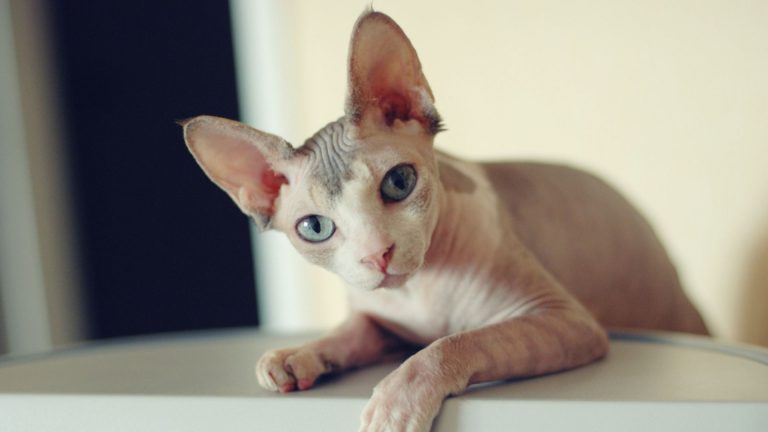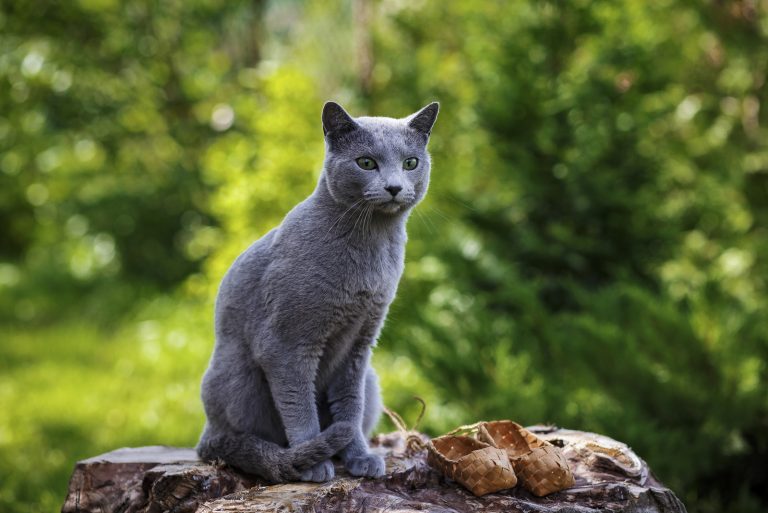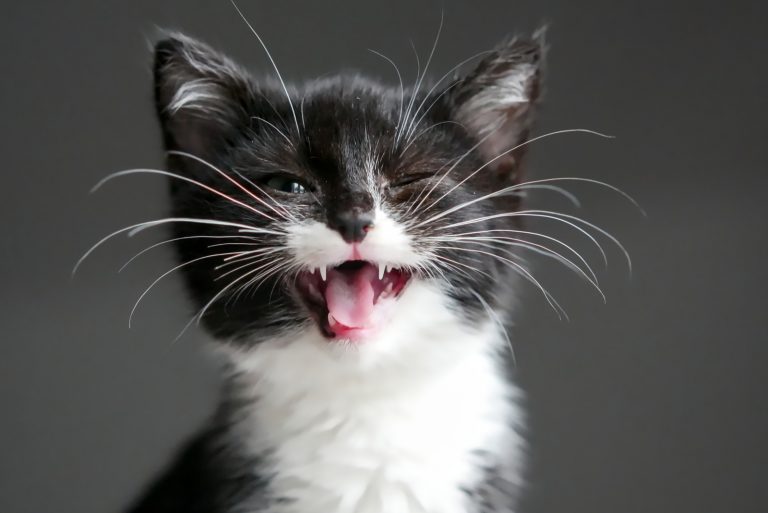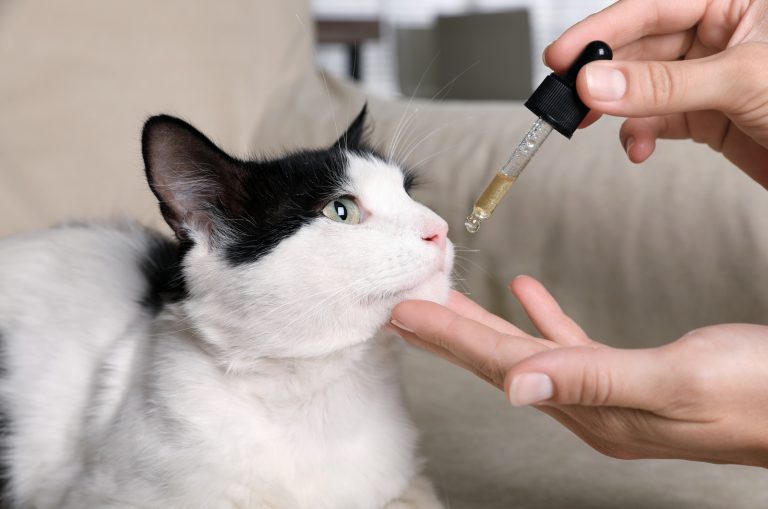What Temp Is Too Cold For Cats? Find Out Now!
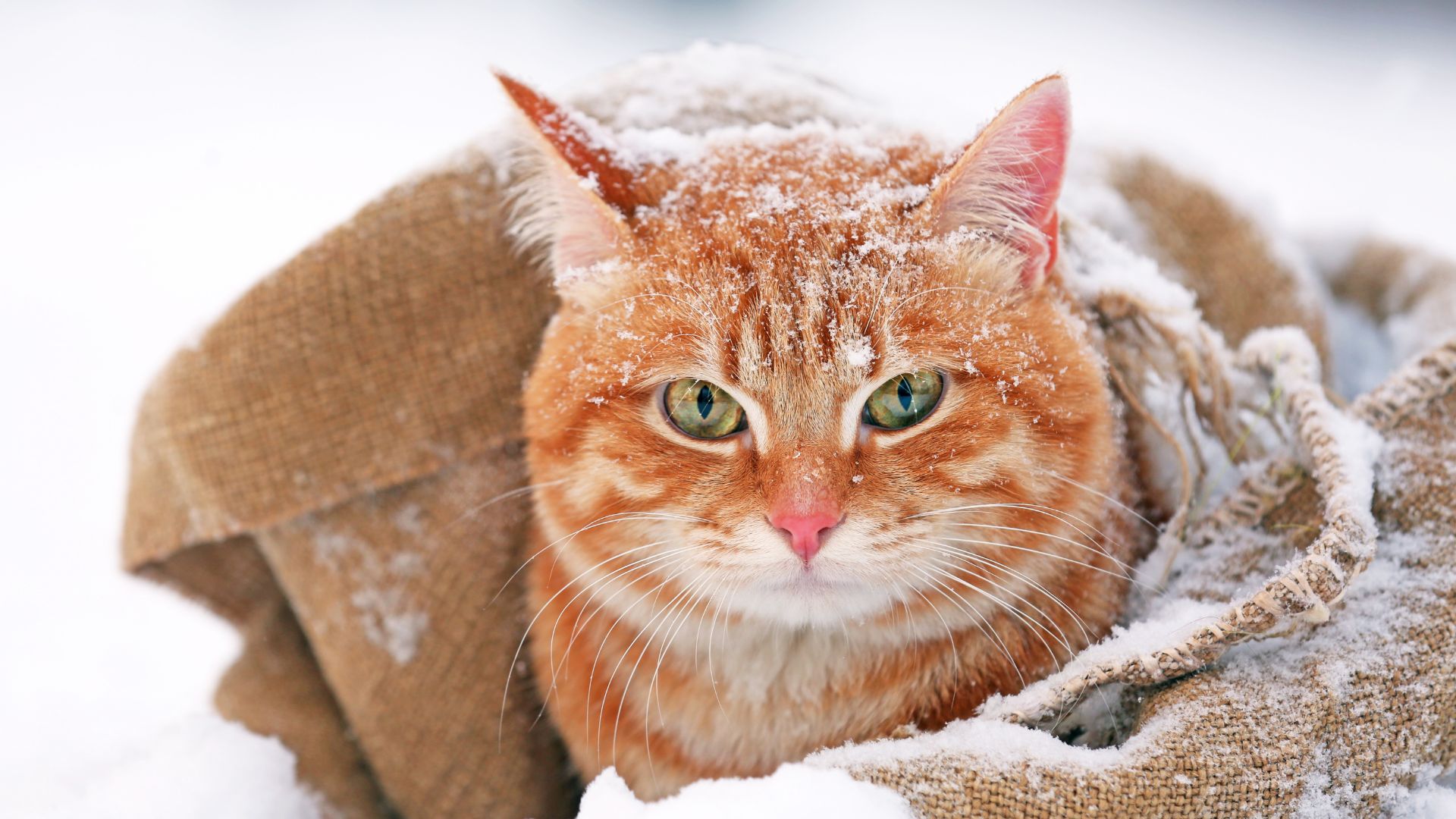
If you’re living in a place which has a colder climate, or you’re traveling to a colder area, you might be wondering what temp is too cold for cats?
While cats have their fur to protect them and keep them warm, it cannot protect them from extremely low temperatures. So, what is the lowest temperature that cats can handle?
It is generally accepted that any temperature below 45 °F (around 7°C) is considered too cold for outdoor cats! Indoor cats are understandably going to be more sensitive to lower temperatures, so for them, even 50 °F (or around 10°C) can be too cold.
There are several other factors to consider, apart from whether your pet is an outdoor cat or an indoor cat. The cat’s breed, age,weight, overall health, and the type and length of fur are all important factors that affect how well the cat can adapt to cooler temperatures.
Read on to learn more about how cats handle cold weather, recognising the signs that your cat is cold and even how you can warm up a shivering kitty!
What Temp Is Too Cold For Cats? 7 Factors To Consider

If not all cats handle cold temperatures the same way, that means there are different factors that come into play when talking about tolerance to cold-temperature.
Below are 7 factors to take into consideration when establishing how well a cat handles cold weather.
1. Is The Cat An Indoor Or An Outdoor Cat?
It’s understandable that indoor cats and outdoor cats handle cold temperatures differently. Indoor cats are typically less tolerant of cold temperatures than outdoor cats because they are not used to low temps.
It’s reasonable to argue that cats who have grown accustomed to living outside may be more tolerant of the cold and can survive better when the temperature drops. Even so, when the temperature is 45°F (7°C) or below, even outdoor cats may start showing signs of hypothermia, and potentially frostbite.
While outdoor cats may be more daring than their indoor cat friends, they still need to be protected from chilly winters.
2. Cat’s Age
A cat’s age is a huge factor in how well the cat can handle the cold. As you might guess, senior cats and kittens do not handle cold temperatures as well as cats in their prime years do.
Older cats and kittens have a harder time regulating their body temperature so they struggle to control it in cold weather conditions.
Another factor to take into consideration is the fact that older cats are prone to feline arthritis. Cats over the age of ten are more likely to be affected by arthritis (in about 90 percent of cases), and joint pain can get worse in cold weather.
3. Cat’s Weight
Fat acts as the body’s natural insulator. A cat with less fat will be affected by cold temperatures quicker than a cat with a lot of fat. As you can guess, obese cats are more resistant to harsh winter months (but this might be the only advantage of a cat being obese).
On the other hand, body fat percentage depends on the cat breed. Siamese and Abyssinian cats are leaner than most other common cat breeds, and because of this, they experience the cold much more quickly than a chubby Ragdoll cat, for example.
4. Cat Breed
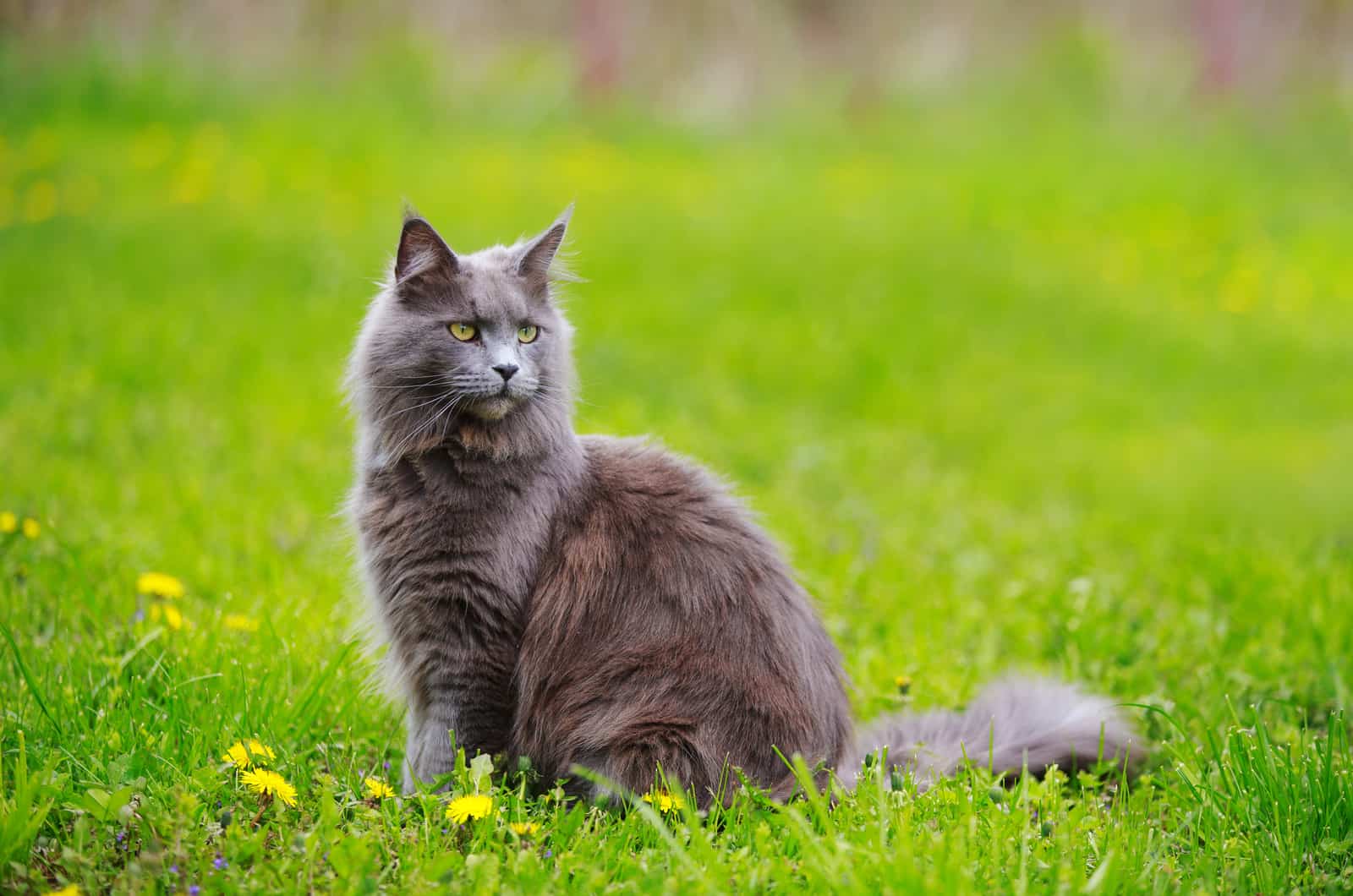
Cat breeds that originated in regions with frigid climates have evolved to be able to withstand cold temperatures. Their bodies are able to withstand the cold winters of their natural environment so they can survive.
The following cat breeds are well-suited to the cold due to their origins:
• Norwegian forest cat
• Maine coon
• Russian blue
• Turkish angora
• Siberian
These breeds have cold-weather adaptations because they originated in very cold regions. These cats usually have thick coats. If a cat has non-water-resistant or thin fur, they might rapidly lose body heat and develop hypothermia and frostbite.
5. Type Of Coat
The type of fur that the cat has also plays a major role in their ability to withstand cold temperatures.
Cats with especially thick coats handle the cold much better than cats with thinner coats. The presence of an undercoat makes a difference too!
Cats with double-layered, thick coats typically fare better in the cold.
Even though some of the most cold-tolerant cats appear to have short fur, they actually have double-thick coats that are perfect for chilly climates. This group includes various long-haired breeds, as well as the Russian Blue and Scottish Fold cat breeds.
6. Length Of Cat’s Fur
The ability to withstand colder weather depends on the length of the cat’s fur as well as the coat type. As you can guess, long-haired cats handle the cold better than short-haired cats.
Cats with no hair, whose hair has been shaved off or those with a short haircut do not handle the cold well! This is because they don’t have an isolating layer of fur to protect them.
Hairless cat breeds, such as the Sphynx cat, should never be allowed outside in colder weather as they have no protection from the cold. They also might be required to wear cat clothes too!
Haircuts involving short hair (such as the lion cut) are never recommended for cats that live in colder environments.
7. Presence Of Other Diseases
A cat’s overall health also plays a major role in their ability to withstand cold temperatures.
Cats that suffer from serious health issues are unlikely to be very good at handling the cold. Hyperthyroidism, heart disease, kidney disease or any type of cancer are much more cold-sensitive, and shouldn’t be outside in any weather.
In any case, sick cats shouldn’t be left outside, especially if they have infectious diseases or autoimmune health problems. However, they can still experience cold-related problems indoors, so pay attention to them, even when they’re inside.
What Body Temperature Do Cats Need To Maintain?
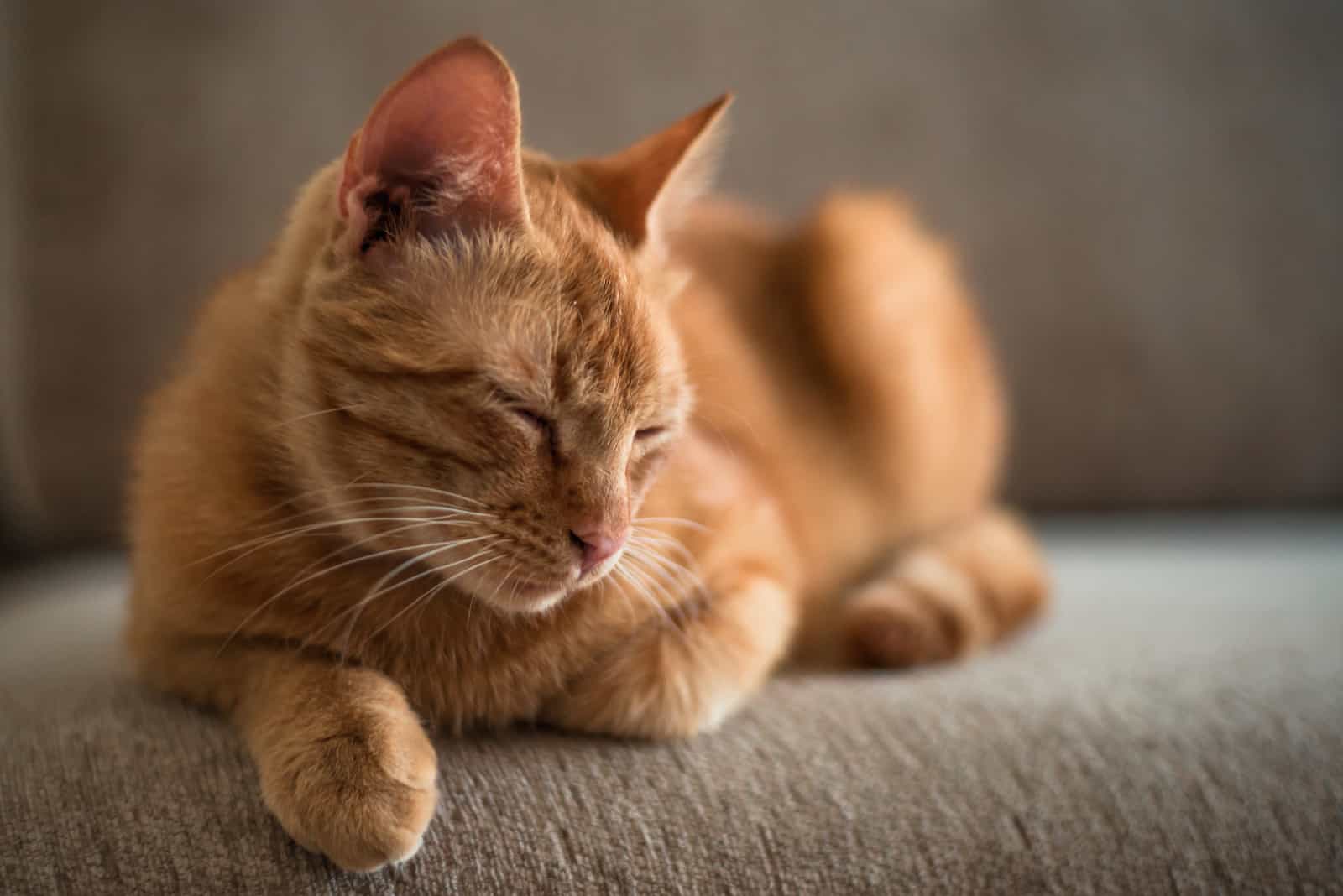
Now that we talked about outside temperature, let’s get into details of inside temperature that cats need to maintain.
The body temperature that cats need to maintain falls in the range of 99-102.5 °F, or 37.2 – 39.2 °C.
As you can see, this is very similar to the body temperature of humans (which is 97.9°F – 99°F, or 36.6°C – 37.2°C).
Knowing the healthy temperature range for a cat to have is important when you want to measure your cat’s body temperature yourself (if you know how to do it properly!).
Do Cats Handle Cold Well?
Many of us think of cats as these tough little warriors that can withstand anything. This is almost true! Yes, they are tough, but it doesn’t mean they can withstand absolutely anything.
Most cats do well in colder climates, however, in very cold weather, neither indoor or outdoor cats handle the cold well.
All cats can handle temperatures above 45 °F (7 °C), but it’s definitely not the optimal temperature for them. If the temperature drops below 45 °F, it’s highly recommended to even your cat – even your outdoor cat – inside!
Signs Your Cat Is Too Cold
There are several indicators that your feline friend is too cold. A reasonable rule of thumb is: if you feel chilly, your cat probably does as well. There are other telltale signs to watch out for too, such as:
• Your cat feeling cold to the touch
• Your cat visibly shivering
• Your cat experiencing shallow breathing
• Your cat curling up in a ball (to preserve their body heat)
• Your cat moving very slowly
• Your cat being weak and lethargic
• Your cat having a low heart rate
• Your cat trying to cuddle close
Remember, there is a difference between a cat being cold and a cat being life-threateningly cold. This is a very serious issue.
Hypothermia In Cats

When a cat’s body temperature falls dangerously below their normal body temperature, hypothermia occurs. Hypothermia is a medical emergency. If the outside temperature is very low, a senior cat, a young kitten, or a cat with an underlying health condition could pass away. If the outside temperature is extremely low, even a very healthy young adult cat can die.
A cat can experience hypothermia if exposed to cold temperatures for an extended period of time.
Signs of mild to severe hypothermia are:
• Being very cold to the touch
• Prolonged and excessive shivering
• Difficulty breathing
• Confusion
• Disorientation
• Slow responses to being called or commanded
• Dilated pupils
• Experiencing muscle stiffness
• Having low blood pressure
• In severe cases, falling into coma
Take your cat to the clinic right away if she exhibits any of these signs of hypothermia.
Frostbite In Cats

Despite having a thick layer of fur, cats can still develop frostbite on the ends of their ears, noses, tails, and toes, as well as any other location where the hair is sparse.
The arteries close to the cat’s skin constrict or narrow when the outside temperature falls below 32 degrees Fahrenheit, harming the skin and other tissues. If this lasts for long enough, frostbite can occur.
While frostbite can affect any area of a cat’s body that is exposed to cold temperatures for an extended period of time, it most frequently affects the ears, tail, and paws.
Signs of frostbite in an affected cat are:
• Pale or bluish skin (in severe cases, the skin may be black)
• Extreme coldness and stiffness of the affected area
• Numbness of the affected area
• Blisters or lesions in the affected area
• Swelling
• Pain
If your cat displays any of these symptoms, take them to the vet immediately!
How Do I Keep My Cat Warm During Cold Weather?
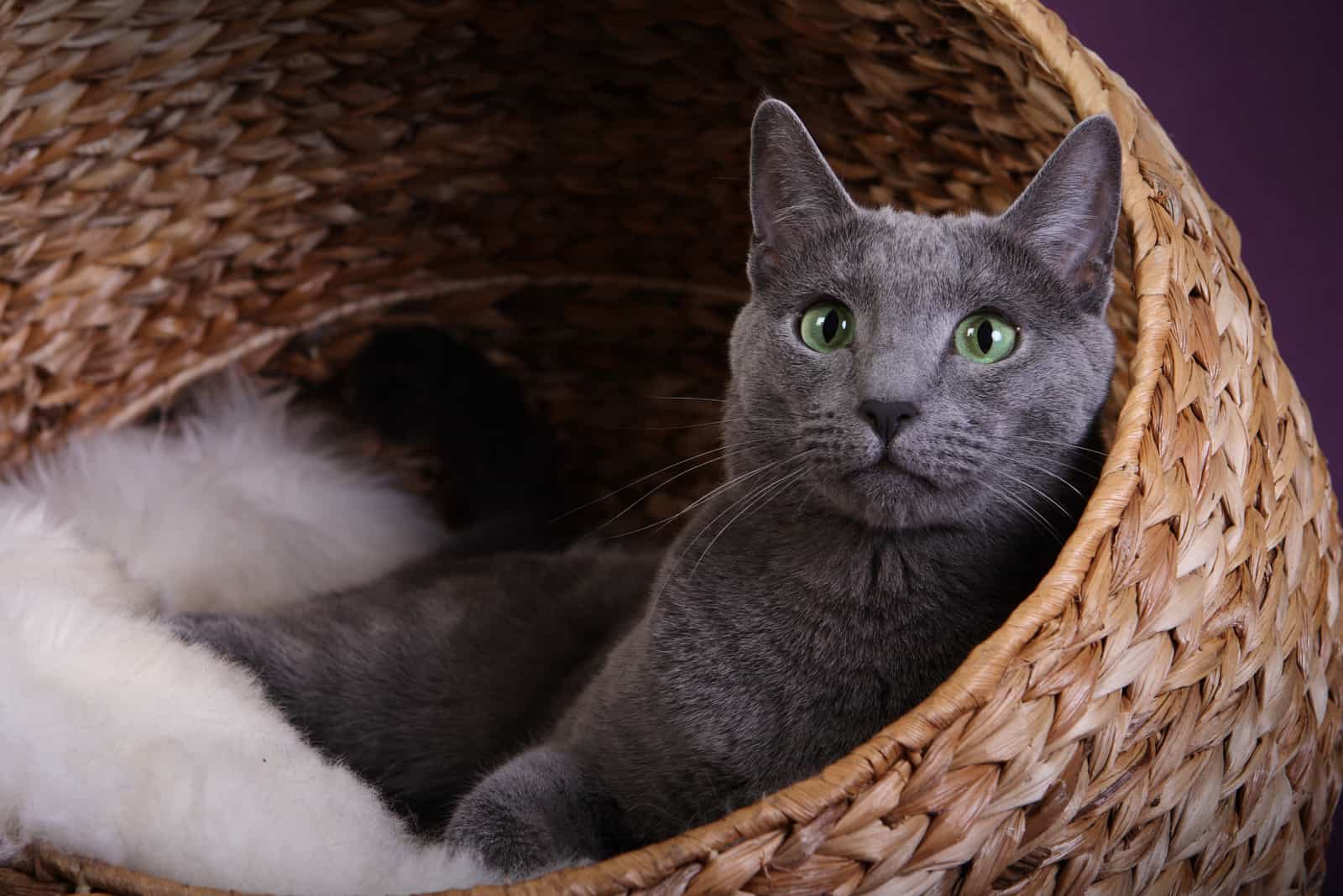
As cat parents, it is our responsibility to make sure that our indoor or outdoor cats are safe and comfortable. That sounds easy, but cat owners in some locations might struggle with keeping their cat warm during cold days, especially if they’re living in a place with a particularly harsh climate.
Below are some easy methods for keeping your pets warm when the weather becomes very chilly.
1. Make Sure The House Temperature Suits Your Indoor Cat
The easiest way to make sure your cat is warm is to make sure the temperature of their home is suitable for them. You might be able to grab a hoodie or lay under a blanket, but cats can’t! It’s important to make sure the temperature of your home is comfortable for them.
If you work outside your home, and there is no one there during the day, don’t forget to adjust the thermostat to a temperature that your cat will be comfortable in. Make sure the temperature is at least 70°F (or around 21°C) during the day.
Make sure your cat also sleeps in a warm, cozy spot. Cats generally have favorite places to sleep. In the winter season, they tend to move around in search of the warmest spots in the house.
To allow the cat to enjoy the warmth of the sun throughout the day, arrange the bed close to the windows and leave the blinds or curtains open.
2. Consider Cat Sweaters
Even though some cat owners might consider it silly, a cozy little cat sweater can be a life-saver in the cold temperatures! I agree, it might be a strange sight, but personally, I think it’s adorable.
Cat sweaters are very functional, as they provide a cat with warmth and comfort even in very cold temperatures.
Bear in mind that the cat’s head, legs and tail are still exposed, so a sweater might not be the best long-term solution. Nevertheless, it’s a cute option that you should definitely consider in extreme cold.
3. Try Getting Your Outdoor Cat A Cat House
In the winter, a warm home can save an outdoor cat or a feral cat’s life. If you have DIY skills, you can easily make a cat kennel out of a plastic storage container or using scrap wood. You can find lots of DIY cat house ideas online; there are many instructions and even videos explaining how to build one.
A cat house will provide shelter from the snow, rain, wind, and freezing temperatures too! If you insulate it well, it can keep your kitty comfortable on even the coldest of days.
4. Consider Letting Your Outdoor Cat Inside
Some cat owners are simply not fond of the idea of having their cat inside their house, for many reasons. However, you might want to reconsider that decision if very cold days are forecast. At the end of the day, your cat’s health is the most important thing.
Letting your cat inside your house, even if it’s just into your hallway or garage, can be the best option for keeping your cat warm.
If you’re okay with it, you can even allow your outdoor cat to become an indoor cat for however long the cold weather lasts.
This is probably the easiest option, and it might be more convenient than building your cat a cat house. Nevertheless, the most important thing is to keep your kitty warm, however you can!
Frequently Asked Questions
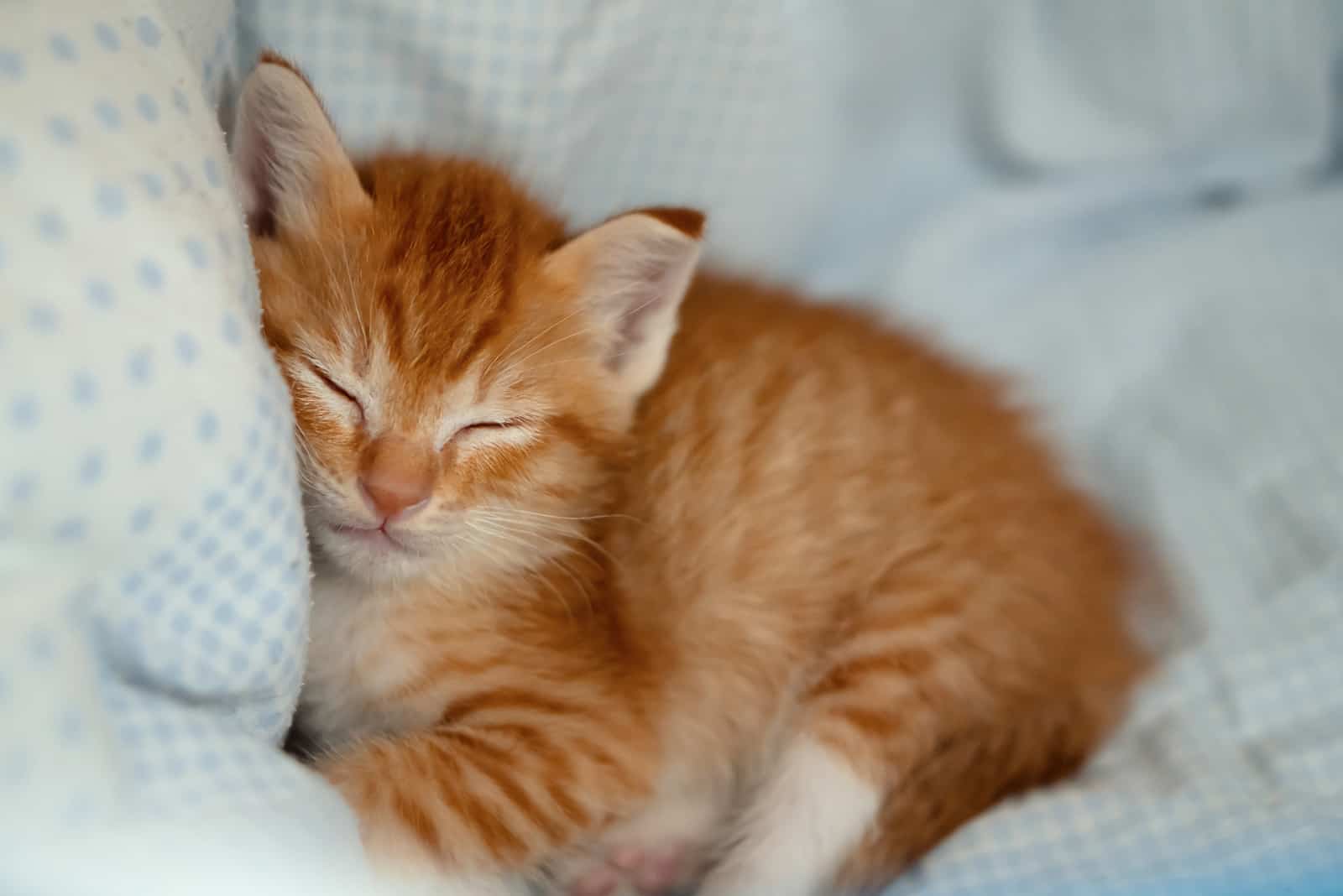
How Cold Can Cats Tolerate?
It is generally agreed that cats should not be left outside in temperatures below 45 °F ( roughly 7 °C)! Since indoor cats are more sensitive to lower temperatures, even 50 °F (or about 10 °C) can be too cold for them.
What’s The Coldest Temperature A Cat Can Handle?
As a generally-accepted rule, it is considered that 45 °F (or around 7°C) is the threshold for what a cat can handle. Being exposed to lower temperatures can be potentially life-threatening for the cat.
How Do I Know If My Cat Is Cold At Night?
The biggest tell-tale sign that your cat is cold at night is if they tend to move away from their usual place of sleep and into some warmer area. For example, if your cat has its designated sleeping area but, when winter comes, they always seem to be cuddled up next to you in your bed (or anywhere else they know it’s warm), then that’s a potential sign your cat is cold at night.
What Temperature Is Safe For Cats Outside?
Cats prefer temperatures of at least 70 degrees and no lower than 60. Cats can only endure extreme heat or cold for a brief period of time outside.
What Are The Signs Of Hypothermia In Cats?
Signs that your cat might be experiencing hypothermia include:
• Being cold to the touch
• Experiencing prolonged shivering
• Finding it difficult to breathe
• Being disoriented
• Slow reactions to commands or calls
• Experiencing stiffness in the muscles
• Having a low blood pressure reading
• In extreme circumstances, coma can occur
Hypothermia is a life-threatening condition which needs to be taken very seriously. If your cat is experiencing any of these symptoms and you suspect they’re suffering from mild hypothermia (which is much more serious than simply being cold) or severe hypothermia (which is an urgent life-threatening condition), then you need to go to the vet immediately.
How Do I Warm Up My Cat?
If your cat has been outside playing in the snow, or is simply cold due to a temperature dip, don’t worry – there are ways to warm up your cat. You can try wrapping them in a warm blanket or putting them near (but not too close) to a heat source such as a heater or radiator. Make sure your cat is at a safe distance from any heat source.
How Do I Keep My Cat Warm?
If your cat is cold and you want to keep them warm, there are a few things you can try:
• Use your own body heat ( cuddle them!)
• Try getting a covered cat bed
• Making a DIY cardboard cat bed
• Try a heated cat bed
• Keep a hot bottle of water near them
• Try using a heating pad (make sure it’s cat safe)
• Buy some cat sweaters (or knit one yourself!)
• Make sure your cat sleeps in a warm place
• Adjust the thermostat so that the ambient temperature is comfortable
• Serve your cat with warm cat food
Final Thoughts
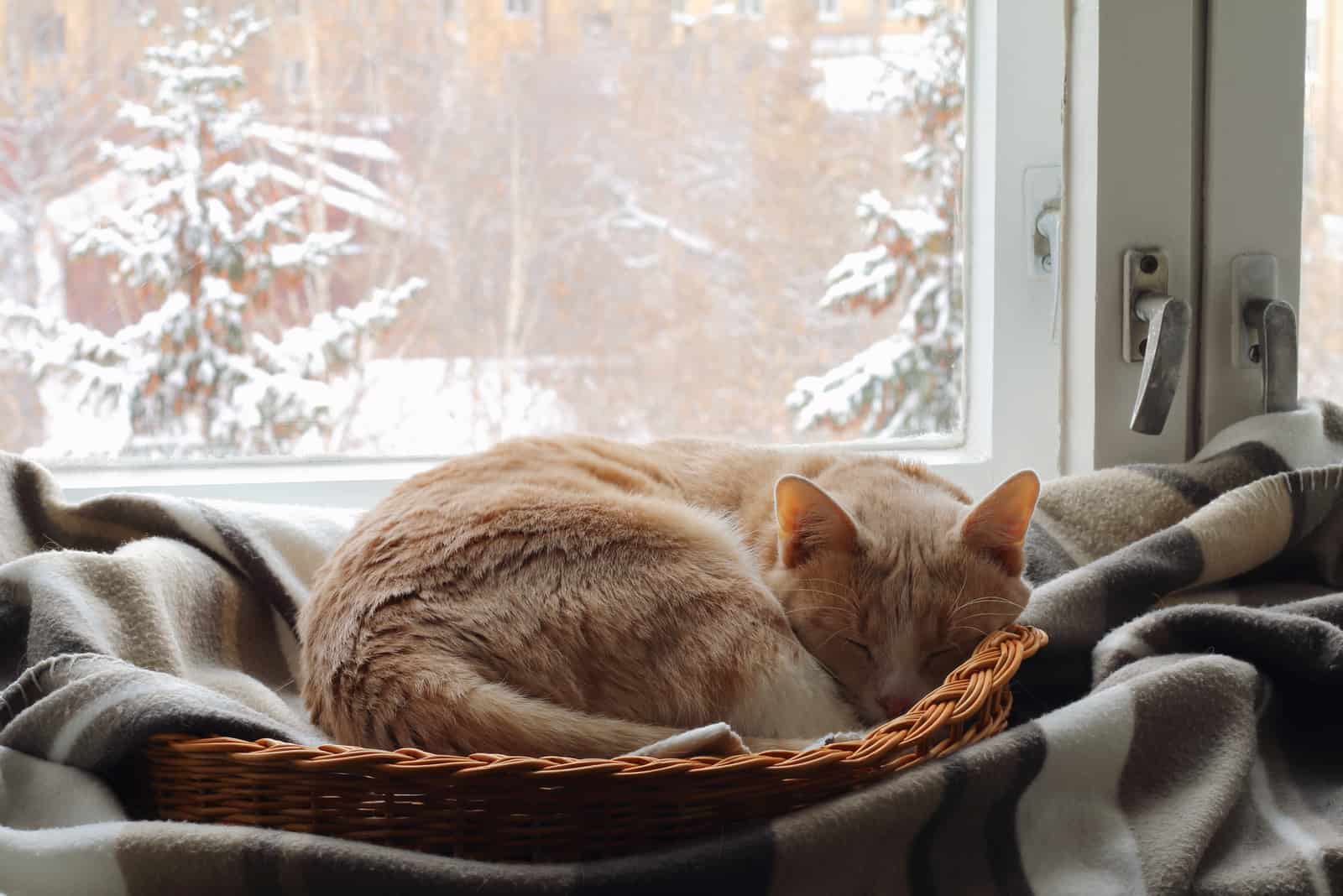
Keeping our furry friends warm and cozy is just one of the many obligations pet parents must fulfill, but we are more than happy to do it! Some cat owners might have worries about keeping their cats safe in lower temperatures, especially if they live in a very cold climate.
Maybe you’re wondering what temp is too cold for cats? Any temperature below 45 degrees Fahrenheit is too cold for cats! Experiencing lower temperatures for a prolonged period of time can mean the cat is risking developing hypothermia and frostbite!
Although cats are tough, adaptable creatures, they can still be vulnerable to very cold temperatures. Shivering, weakness, and other minor hypothermia symptoms may occur if your cat becomes too cold. If this gets worse, the cat may suffer from stiffness, shallow breathing, and dilated pupils. All of these symptoms indicate that your cat urgently needs a vet’s help!
I hope you learned something new while reading this article, and remember – keep your cat (and yourself) warm and cozy!
Now that you know what temperature is too cold for cats, what do you think, how hot is too hot for cats?

